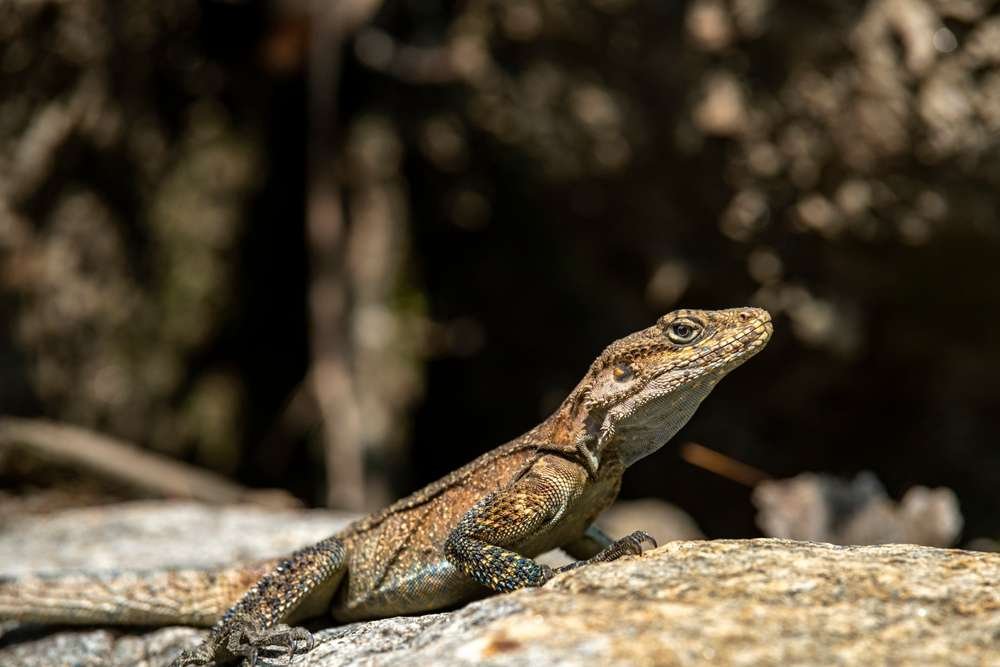Kirk’s Rock Agama
( Rock agama )
- Agama kirkii
- IUCN Status: Least Concern
- Threat: harmless
- Venom/Toxin: none
- Trend: stable

- Phylum: Chordata
- Class: Reptilia
- Order: Squamata
- Suborder: Iguania
- Family: Agamidae
- Genus: Agama
Share:
General Information
Kirk’s rock agama is much smaller in size compared to the Southern tree agama and they much rather prefer rocky areas.
Fun Facts!
Agama lizards are Africa’s most dominant lizard species. They are ambush foragers and only spend 4% of their time moving. This involves an average of less than one movement in two minutes. Even though they are mostly stationary (42% on lateral branches, 35% on tree trunks and 23% on the ground) they can move extremely fast and are able to jump high when escaping. They are known to slowly change colour over-time either for dominance, camouflage or mating season.
Description
Kirk’s rock agama is a small agama lizard. They have a brown camouflage with dark-brown steaks on their backs and side of their necks.
- Length: up to 25 cm
Ecology and Behaviour
Kirk’s rock agama are very dominant and aggresive. Males usually fight with other males. With agamas, their dominance in the group is determined through fights. A dominant male is brightly colored and this male enjoys the privileges of mating with females and also gets the best place to rest.
Diet
Kirk’s rock agama are omnivores but mostly insectivorous. Their diet consists of ants, millipedes, caterpillars, grasshoppers and beetles. Prey diversity and volumes fluctuate seasonally.
Reproduction
Kirk’s rock agama reproduces seasonally. Testicular volume of males reaches a maximum during August to September (austral spring), and follicles of females become enlarged during August to December. Females lay a single clutch per year, 5 – 14 oval soft-shelled eggs on average in a hole dug in moist soil. Larger females produce larger clutches than smaller females. These hatch after 90 days.
Conservation
It is categorized by the International Union for Conservation of Nature (IUCN) as a, ” Least Concern “. They are wide-spread in southern Africa and their population remains stable.
Distribution and Habitat
Kirk’s rock agama is a small lizard found in Malawi, Zambia, Zimbabwe, Mozambique, Botswana, and Tanzania. They live in Savanna and Rocky areas (eg. inland cliffs, mountain peaks).
Interaction with humans
Agama lizards are persecuted in some areas due to a belief that they are harmful when infact they are not even though they do bite when confronted. It is believed that they are used by traditional doctors to make covert love potions.
No donation to this project yet.
| M | T | W | T | F | S | S |
|---|---|---|---|---|---|---|
| 1 | 2 | 3 | 4 | 5 | 6 | 7 |
| 8 | 9 | 10 | 11 | 12 | 13 | 14 |
| 15 | 16 | 17 | 18 | 19 | 20 | 21 |
| 22 | 23 | 24 | 25 | 26 | 27 | 28 |
| 29 | 30 | 31 | ||||


